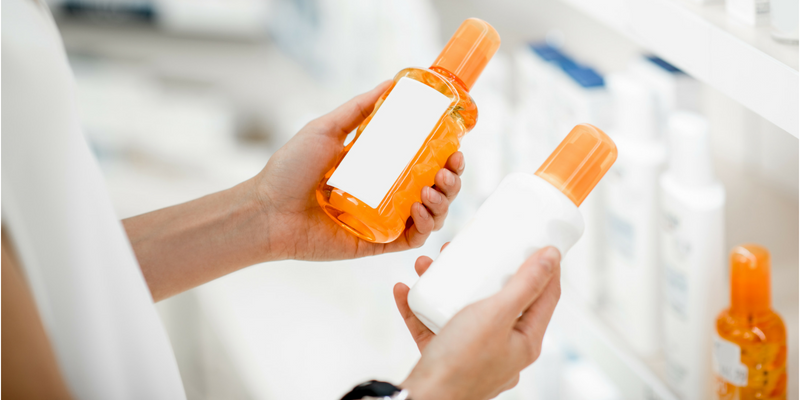How Is the SPF Number Determined For Water-Resistant Sunscreens?

Because May is National Skin Cancer Month, you will see many reports about sunscreens — from everything to inaccurate SPF numbers to “worrisome” ingredients. In this article, we’re going to focus on answering the question, “How is the SPF number assigned to water resistant sunscreens?” It is important when considering the results of these reports to look closely at the testing that was done. Different testing is required for sunscreens that do not make a water resistant claim and sunscreens that do make a water resistant claim. In some instances, the reports test a non-water-resistant sunscreen using the water-resistant sunscreen testing criteria. This results in misleading data on sunscreen efficacy that can scare you unnecessarily. In other words, sunscreens that do not claim to be water-resistant have different testing requirements than sunscreens that do claim to be water resistant.
In 2017, Consumer Reports released a report that claimed, “Of the 62 lotions, sprays, sticks, and lip balms in our ratings this year, 23 tested at less than half their labeled SPF number.” What many consumers do not know about this alarming report is that Consumer Reports did not use the proper testing method for all of the sunscreens. Thus, the results appeared as though many of these sunscreens did not contain the real SPF number listed on the bottle, when, in fact, the testing method that Consumer Reports used made it impossible to determine this information.
Understanding FDA Requirements for SPF Testing
The FDA has a very specific set of steps that companies must follow when testing for water-resistant SPF after 80 minutes of water immersion. The steps are as follows:
- Apply at least 2 mg/cm2 of the sunscreen to the subject’s back. The size of the test site must be at least 30 cm2. Ten different test sites must be used.
- Perform moderate activity in water for 20 minutes.
- Rest out of water for 15 minutes. Do not towel dry the test sites.
- Perform moderate activity in water for 20 minutes.
- Rest out of water for 15 minutes. Do not towel dry the test sites.
- Perform moderate activity in water for 20 minutes.
- Rest out of water for 15 minutes. Do not towel dry the test sites.
- Perform moderate activity in water for 20 minutes.
- Allow test sites to dry completely without toweling.
- Apply the SPF standard as described above.
- Expose test sites to the minimal erythema dose (MED), which is the smallest UV dose that produces perceptible redness of the skin with clearly defined borders. In FDA studies, the MED is measured at 16 to 24 hours after UV exposure. The MED is then used to determine the SPF.
As you can see, test results that do not follow this specific set of steps could be easily skewed. For instance, the Consumer Reports study did not state whether or not participants towel-dried , which could have a huge impact on the outcome. (Rubbing vs patting with the towel matters as well). It also did not state how long the subjects were immersed in water. Additionally, only water-resistant sunscreens should have their SPF value tested after water immersion. Other sunscreens need to be tested without prior water immersion, as they do not claim to be water-resistant.
Water-Resistant vs. Non-Water-Resistant Sunscreens
According to new sunscreen testing rules and regulations, sunscreens are no longer able to be labeled as “waterproof” or “sweatproof.” Instead, sunscreens can be labeled as “water-resistant 40 minutes” or “water-resistant 80 minutes.” These indicate how long you can stay in the water (40 minutes or 80 minutes) and still be protected from the sun. Therefore, if you plan on swimming or performing vigorous exercise that would cause you to sweat, you should use a water-resistant sunscreen.
Sunscreens that do not contain this labeling can be used as a daily SPF, as long as you do not plan on getting wet or excessively sweating when wearing them.
What SPF Number Should I Use?
There is an overwhelming amount of information out there about which SPF number to choose, so it’s no wonder that many people are confused. As a dermatologist, I recommend using SPF 15 on your face for everyday use when you plan to be in the sun for less than 30 minutes. If you’re planning a day at the beach or will be out golfing, choose a higher SPF. Even if you are using a high SPF, make sure you still reapply it at least every hour or after being in water or sweating.
How Much Sunscreen Should I Apply?
Make sure you are applying enough sunscreen to reach the SPF number listed on the bottle. The amount needed depends on the type of sunscreen used. For a cream sunscreen, it is recommended that you use ½ teaspoon of sunscreen for your face, and one ounce (about a shot glass worth) of sunscreen to cover your body.
The Bottom Line
Do not be alarmed by the myriad of sunscreen reports that are sure to start flooding your Facebook page and newsfeed. If you are unsure about a particular product, read its label and ingredients carefully, or contact the manufacturer directly. Despite all the myths and marketing scare tactics surrounding sunscreen use, the bottom line is that you must wear sunscreen or sun protective clothing to protect your skin from the damaging effects of the sun’s UV rays.
For more information about the harmful effects of the sun, which include oxidative stress, on your skin, watch this short video about free radicals. You can also contact Baumann Cosmetic online, or send us a message on Facebook!


